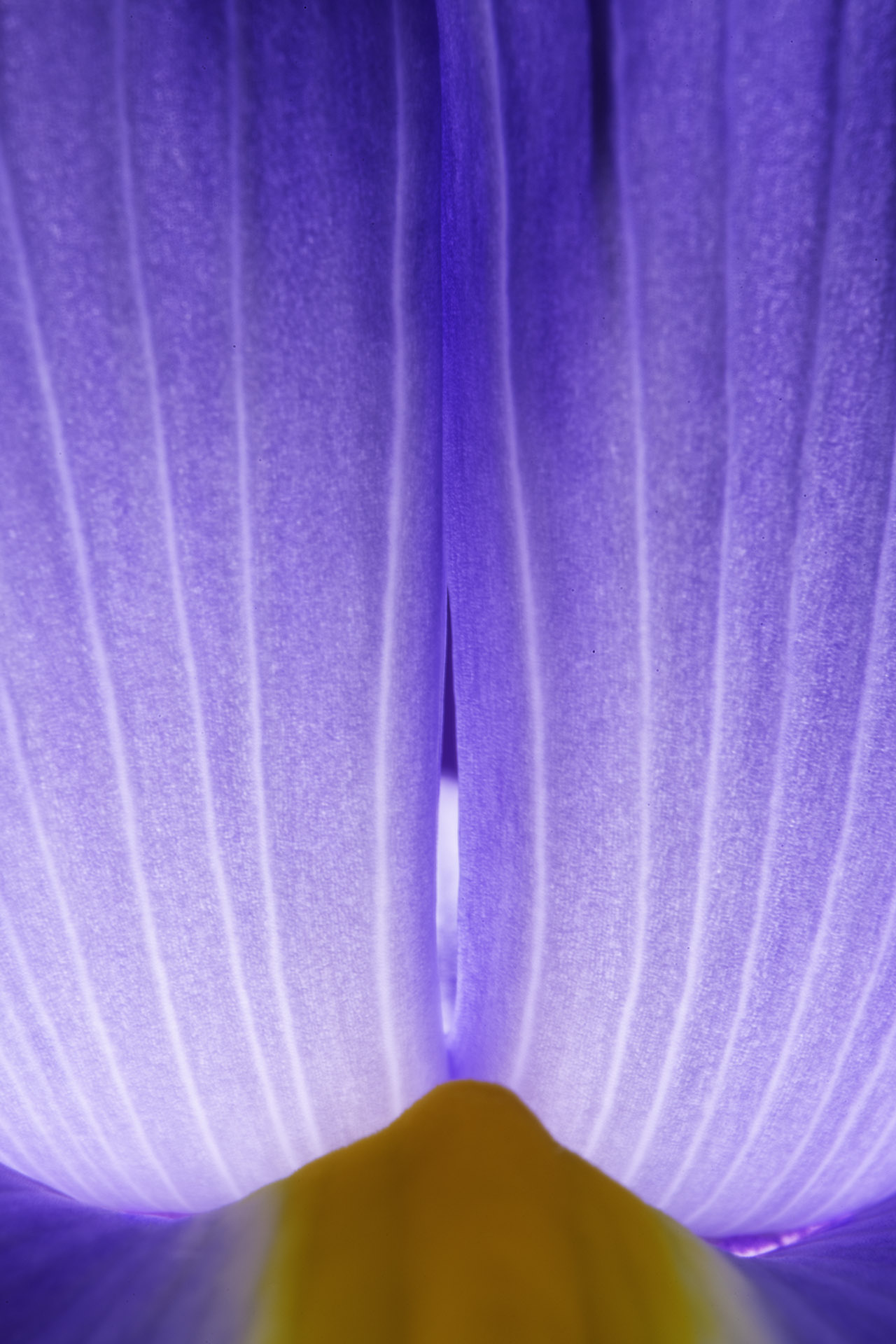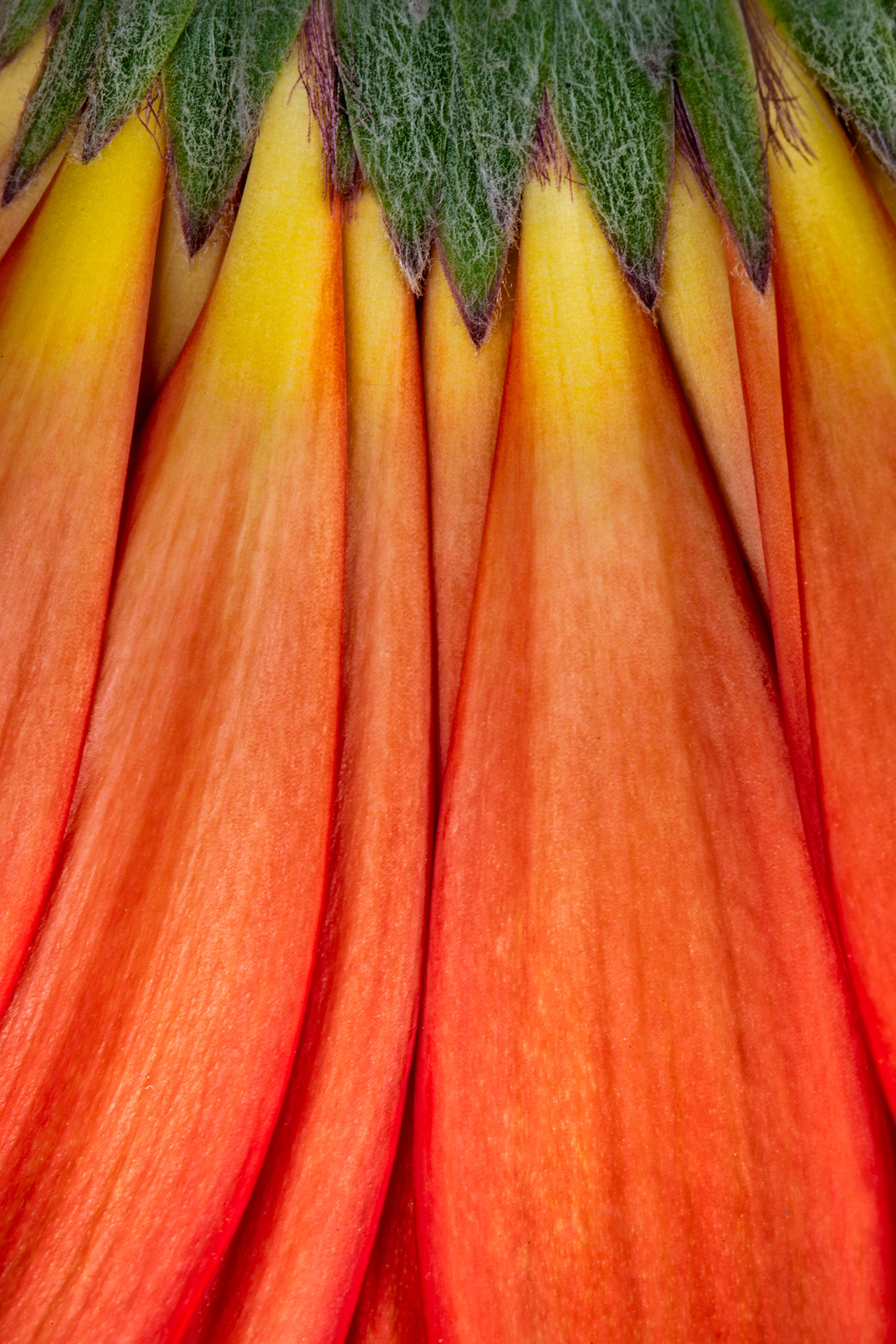
I photographed these close-ups of flower petals (image above: an Iris; image below: the petals of a Gerbera from behind) with a new lens, the Irix 150mm f/2.8 “Dragonfly” telephoto 1:1 macro. For a telephoto macro, this is a relatively inexpensive lens (about $600 recently at B&H). Apparently, the Irix lenses are designed in Switzerland, and manufactured in Korea.
The lens comes in a nice box, with a useful hard pouch for storage, amenities such as two rear lens caps and a nice lens hood, has a functional tripod collar with an Arca-mount foot that lets you switch from horizontal to vertical and back again, and is handsomely finished. It appears solidly made, with good materials in the right places.
That said, I did have a build quality issue with the first one I ordered from B&H, so I had to send it back for an exchange. I won’t go into details about what the problem was, except to note that it was a show-stopper (if you need to know, drop me an email). The build-quality issue suggests that if you buy one, make sure you buy from a reputable source, test it thoroughly during the return period, and send it back if necessary.
A complaint about the lens design is that it lacks a manual aperture ring, at least in the Nikon F mount (I haven’t tried the Canon or Sony E mount versions, so I can’t verify that this holds cross-platform, but it probably does). The expectation is that you are going to set the aperture using the camera.
This is a serious drawback in a lens that is likely to be used in technical circumstances, as is the case with a telephoto macro. In particular, if you use the lens with a bellows or an extension tube that has a manual diaphragm coupling (not an uncommon scenario with a lens of this sort), the only way to change the aperture that I could figure out is to dismount the whole lens-and-bellows, put the lens (or another lens) on, then reset the aperture, which will stick even after the lens is remounted on the bellows.
Somewhat counteracting this complaint, a nice bonus feature is a solid focus lock. This is useful when the lens is on a tripod and pointed downward, and you want to make a long exposure without having the focus slip.
This is a sophisticated, solidly built lens. According to the manufacturer, the aperture mechanism includes 11 rounded blades, designed to create pleasing bokeh (background blurring). The manual focus mechanism is solid and lends itself to precision. The lens has been weather sealed at key points.
Again according to the manufacturer, “The optical design consists of twelve elements – three of which are made of super-low dispersion glass (ED), another four of glass with a higher refractive index (HR), and the whole arranged into nine optical groups. Thanks to this construction, we obtain an close to zero distortion (at a level of 0.1%).”
Folks who know me well know that I collect macro lenses; in fact, I have been called “the Imelda Marcos” of macro lenses. I think I’ve lost track of how many I own, and I’m pleased to add this Dragonfly to my collection. It fills a gap between my Nikkor 200mm f/4 macro and the Nikkor 105mm and Zeiss 100mm macros. Subjectively, I think it beats the Nikkor 200mm (which only focuses to 1:2 rather than the 1:1 of the Dragonfly) in terms of sharpness, although it may not be quite up to the Nikkor 105mm or Zeiss 100mm. Even here, the modern design and coatings help with the comparison, and I like the extra reach of the 150mm focal length.
Probably the closest comparable lenses are the Canon 180mm macro (which won’t help Nikon users), and the Sigma 180mm telephoto macro, which by reputation is a great lens (I don’t own one), but considerably more expensive than the Irix.
So enough technical talk and comparison of other macro lenses. What I really think is below the image.

What Harold really thinks: First, both the images that accompany this story were made with the Irix 150mm f/2.8 “Dragonfly” stopped down to f/32. Obviously, these results are pleasing, with limited diffraction considering the small aperture, and I am happy to own this lens. I expect this to be a go-to telephoto macro lens in situations in which this specialized optic is called for.
Disclosures: None. I have no relationship whatsoever with Irix, and bought the lens with my own hard-earned cash money.
Pingback: Harold Davis—Best of 2019